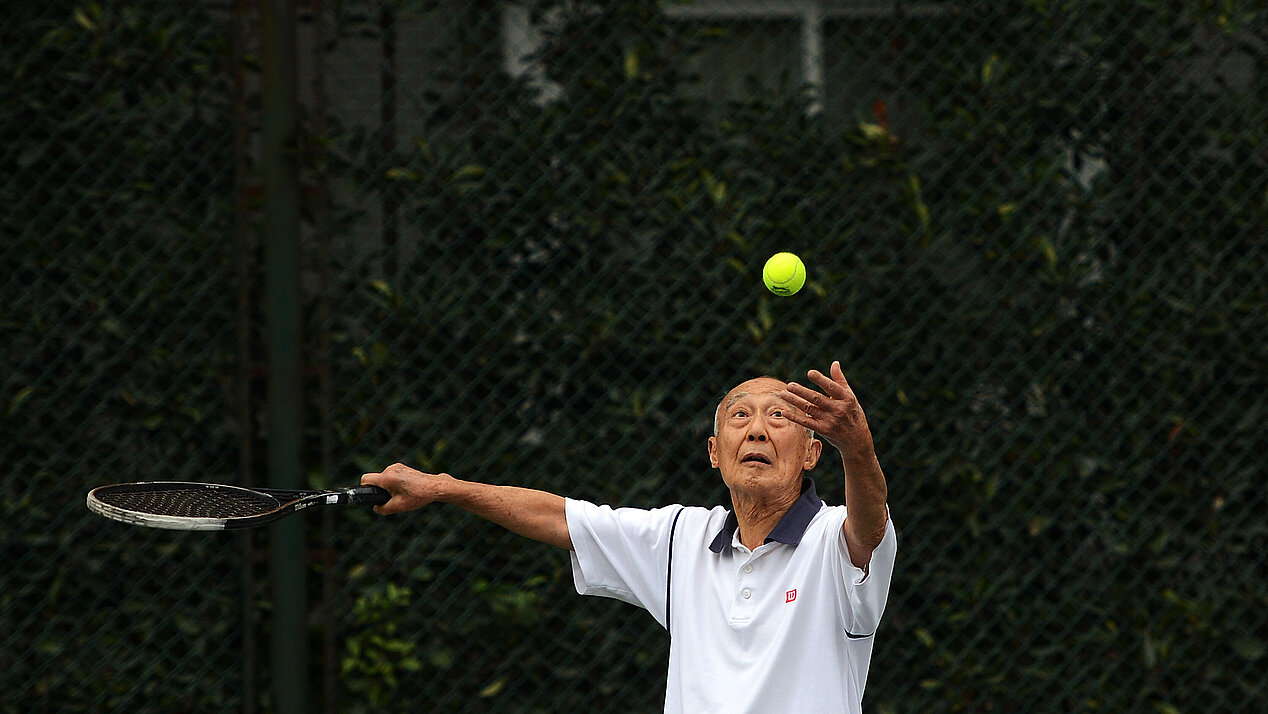
As Chinese society ages, sport is becoming an important tool for improving people's quality of life, and not only that of the elderly. The Chinese government and society as a whole are now increasingly turning to sport as a way of improving the nation's health. China has its own traditional culture of exercise, and this is becoming increasingly popular with its older population. According to international standards, a population is classified as 'ageing' when the over-60s repre - sent more than 10 percent of the total population. At the end the 2005 the number of over-60s in China hit the 144 million mark, which is 11 percent of the total population.
By 2020, it is estimated that the number of over-60s will reach 248 million, or 17.2 percent of the total population. Chinese experts estimate that a high point of 437 million, or some 30 percent of the total population, will be reached in 2051.
Low birth rates and growing life expectancy are the main reasons for the ageing of the Chinese population. In the 1970s, the People's Republic attempted to reduce the number of children in the country, issuing a decree in 1980 limiting the number of children a family could have to one – a decree that only began to be phased out in 2013. This has led to China's current demographic problem.
In an attempt to prevent the further ageing of its population, China announced the official ending of its one- child policy in 2015. In future, couples will be allowed to have two children. However, many parents simply can't afford a second child due to the rising costs of housing and education. This won't change with the end of the onechild policy.
Since the economic reforms began, the country's restrictive household registration system (Hukou) has been gradually relaxed, resulting in more than 80 million migrant workers, predominantly young men, moving into the cities to earn more money. The result of this migration is the 'empty nest' villages populated only by older people. In rural areas, 60 percent of the population are over the age of 60.
Official forecasts suggest that this number will grow by around 850,000 every year, reaching 120 million in the next 20 years.
The policy that was introduced in the 1970s of restricting couples to one child in urban areas and to two or three in the countryside certainly had the effect of slowing down China's population growth, but it also turned the country's age pyramid on its head. These days, older people can expect to enjoy a life expectancy and modest level of prosperity that previous generations never had the chance to experience, but it is not something they are necessarily celebrating. Only a few people are guaranteed an adequate pension.
According to Chinese law, the official retirement age is 60 for men and 55 for women (50 for some). China has a population of more than 1.33 billion, but only around 30 percent of peo - ple are entitled to a state pension. In many cases, the country's welfare system still requires families to provide for their older family members because it makes little provision for old-age pensions. Most older people continue to be supported by their families and by agriculture.
In rural areas, 60 percent of the population are over the age of 60.
But the country's modernisation means that lifestyles are changing. Society has become much more mobile. Parents and their grown-up children no longer live in the same place and today's young adults no longer necessarily want to live with their parents. Older people are increasingly moving into old people's homes.
There are currently more than 50 million old people in China who do some form of sport or exercise. This represents 36.5 percent of the country's total elderly population. Around one third of them live in cities, meaning there are 17 million seniors in urban areas who are doing sport. It is clear that as regional economies and cultures develop, more and more people are taking up sport.
Recent studies suggest that older Chinese who exercise tend to spend a relatively long time on each session, with around 80 percent of them spending longer than an hour each time. On average this amounts to 300 hours a year. Studies show the following:
Older people generally prefer traditional sports and those that have developed out of the Chinese exercise culture. Walking, jogging, table tennis, badminton, qigong, tai chi, aerobics and dancing are the most popular forms of sport and exercise. Chess,Yangge, tai chi and qigong are all considered part of traditional Chinese exercise culture. Cycling, bad - minton and table tennis also have a long tradition in the country. Aerobics, dancing, jogging, fishing and swim - ming have also become fashionable amongst older people.
As regional economies and cultures develop, more and more people are taking up sport.
In recent times, local governments have reacted to the rapidly ageing population by setting up sports clubs for seniors in the cities and provinces. With the exception of Tibet, where the concept of the sports club is still in its infancy, the other 30 provinces, the autonomous regions, the directcontrolled municipalities, the Xinjiang Task Force and other entitities such as the railway, forestry, electronics and oil industries have all started setting up sports clubs for people over the age of 60.
Urban areas and regions with strong economies tend to have high participation rates, a good sports infrastructure and plenty of sports facilities compared to rural areas and regions with weaker economies.
Culture has a strategic role to play in the process of European unification. What about cultural relations within Europe? How can cultural policy contribute to a European identity? In the Culture Report Progress Europe, international authors seek answers to these questions. Since 2021, the Culture Report is published exclusively online.